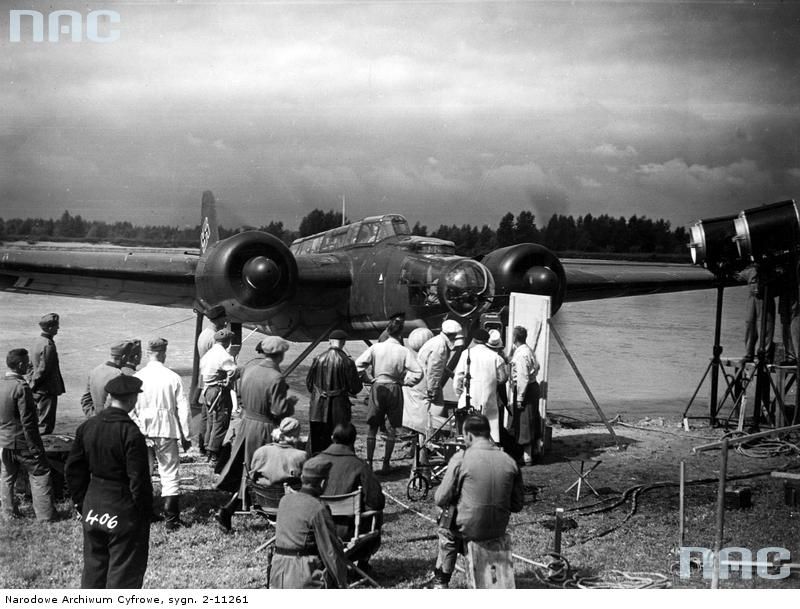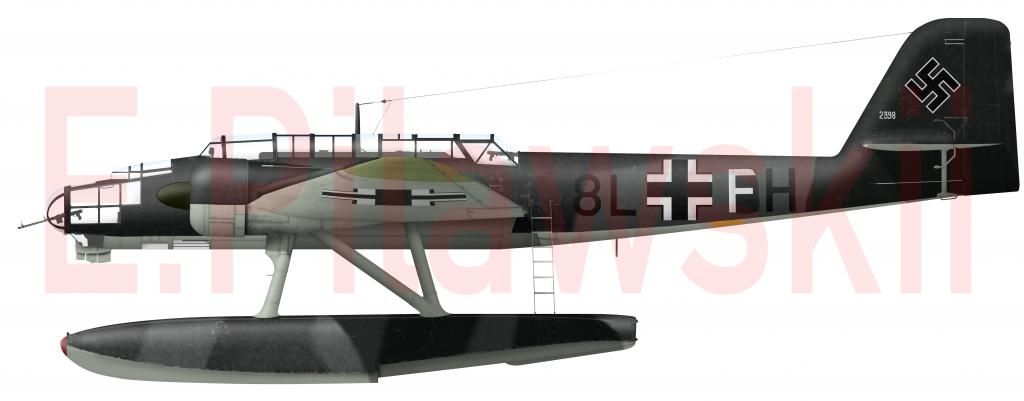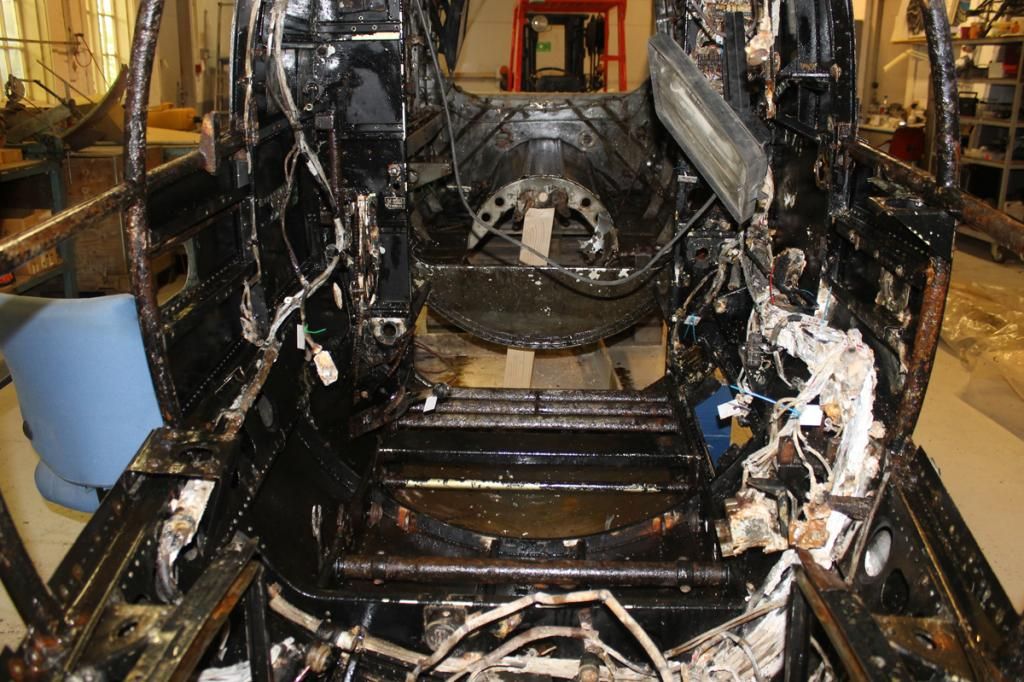Almost three weeks ago I and my friend Erik Pilawskii paid a visit to the aviation Museum at Stavanger-Sola airport. Our objective was to investigate the colours of this remarkably preserved aircraft and also to make measurements of it as we are produced a barns-new set of scale drawings of the He 115.
Erik has now completed the chemical and physical tests of the paint samples we took and the results have been put together in a short report that will be sent to the Museum´s staff very soon. I´d like to present a summery of our findings for you here, as I think they are quite interesting and important - especially as they clearly show that not all Luftwaffe aircraft, even as early as late 1942, were painted according to regulations!
The aircraft in question is He 115B, W.nr. 2398, rescued from its watery grave in June 2012. Its rescue has been covered in another thread on this forum, but here is a short summary of the history.
-----------------------------------------------------------
June 1940 - E-Stelle Travemünde, Torpedoversuche
August 1941 - Flugzeugführerschule C 17 August 1942, Pütnitz
September 1942 - 1./ Küstenfliegergruppe 906, Billefjord
28th December 1942 - Stavanger-Sola See, landing accident following night mission, 90 % damage, floats and one engine rescued
-----------------------------------------------------------
I recently discovered that this particular plane may actually be a movie star! A photo from a polish archive, reproduced below, show what is the He 115 used in the filming of the German propaganda movie "Kampfgeschwader Lützow".

Checking a low-res version of the movie on YouTube I discovered this close-up.

Despite the low quality the coding "BH+" may be clearly seen, part of the aircraft St.Kz. We know from various reports that 2398 was BH+AM and belonged to a rather small block of He 115Bs. As far as I can see all aircraft within this block which presumably had this St.Kz. block were either lost or in front-line service by them time the movie was shot (1940, it was released in February 1941), except 2398 which seems to have been available for film work, being at Travemünde. So although not 100 % certain this unique survivor may actually be caught on both camera and film during WWII. If anyone can shed more light on this I would be delighted to hear from you.
Going back to the colours of the aircraft when it was found, here are the results;
The plane had at some time been completely repainted, probably after it was delivered to 1/906 in Norway.
The original scheme can be shown to have been the normal and expected RLM 72/73/65 scheme, but the ventral surfaces had been completely repainted in RLM 02 wheres the two upper greens had been replaced by RLM 66 and an even darker grey which is midway between RLM 66 and RLM 22 in darkness. The chemical properties and inferior adherence of this darkest upper surfaces colour suggest it was actually a mix of the two, i.e. RLM 66+RLM 22.
The two new upper surface colours seem to follow the standard splinter pattern to some degree on the fuselage (the wings were not available for a detailed analysis of they pattern), although with variations. The entire empennage is for instance completely finished in this very dark "mixed grey" colour.
Furthermore, having served in the North (Billefjord in Finnmark) before it was transferred south, there was apparently a desire to overpaint the yellow theatre markings below the wing tips. This was done with a very mysterious bright green colour which is definitely not an RLM colour. In fact, it is highly unlikely it is a aviation colour at all as its physical and chemical properties iare totally at variance with such paints. It is much more like a marine varnish, perhaps a marine boat paint! This green colour may be clearly seen in some of Ernst Knutson´s excellent photos of the rescue and subsequent clean-up of the aircraft on Flickr.
This overpainting with very dark colours and RLM 02 on the ventral surfaces resulted in the demarcation line between upper and ventral colours being shifted a little bit towards the bottom, especially on the nose section.
Why the aircraft received such an apparently unique and unspecified colour scheme is not known. What is know is that the aircraft was used for mission during dusk/night as it was fitted with flame dampers rarely seen on He 115s. It is therefore possible that the camouflage was revised due to a desire to be better camouflaged during such missions in the dark. Wether this happened to other He 115s during the war will be very difficult to tell from black-and-white photographs alone; examination of a photo showing He 115B 8L+KH at Billefjord at roughly the same time period seem to indicate it has the normal maritime greens as the standard splitter pattern can be seen on the tail and elsewhere.
The profile below is an approximation of ow this aircraft appeared during its final flight:

A few other points to note.
The aircraft is listed as a He 115B/C in the original loss report, but as it lacks the 15 mm MG 151 under the nose, it is a He 115B (specifically a B-1 as it is unlikely it had the ice runners of the B-2).
It had also received several late-service modifications applied to He 115s (both A, Bs, and Cs), some of which have not been documented before.
1. The elevator mass-balance horns have been replaced with a new type which has a C-shape and an auxiliary support strut (the rudder retained the original horns). All He 115s in service sometime after 1941/42 received this modification and it may be used to date photos.
2. MG 17s were fitted in the engine nacelles firing rewards (this was a common modification on Bs and Cs, but one A has also been seen with it!).
3. A 15 mm armour plate with two support struts was fitted behind the pilot´s head.
Interior colour was originally a green much darker than RLM 02, which has been identified as RLM 62 Olivengrun (incidentally the same colour originally used on the upper surfaces on the Swedish He 115 S), at some time overpainted with the regulation RLM 02. The exception is the forward nose compartment which is finished completely in RLM 66 (see photo below). Modellers should note the nose compartment colour!

So, this aircraft allows us a glimpse into the past and reveal a very non-standard finish. There is a lesson here for us all; despite the plethora of instructions and manuals detailing how Luftwaffe aircraft were to be painted, it is clear these were as often as not ignored or amended by the people in the field. Therefore it is unsafe to categorically state that a given aircraft was painted this or that colour in lieu of hard physical evidence. A most likely approximation can usually be arrived at, but aberrations and unspecified schemes were certainly common, not only on fighter aircraft were they are well documented, but also on lesser known aircraft types.
Regarding M. Ullmann´s RLM 83 Dunkelblau we also examined the paint on the Bv 138 float at Stavanger. Our findings are also in the report and it is clear to us that this is a new dark blue colour. We suspect it was much more prevalent on maritime Luftwaffe aircraft from late 1943 to the end of the war than is currently known.
This report is part of my research for my new book on the Heinkel He 115 which is co-authored by Andreas Brekken and "seaplanes" from this forum. A more detailed analysis of this aircraft, its colours and use as well as a walkaround will be published in the book. And no, we don´t have a publishing date as yet! It will be finished when it is finished!
I hope this is of some interest. At least modellers who have Special Hobby´s excellent 1/48 kit will be able to paint it in the colours it had when it made its final flight all those years ago.
Kjetil